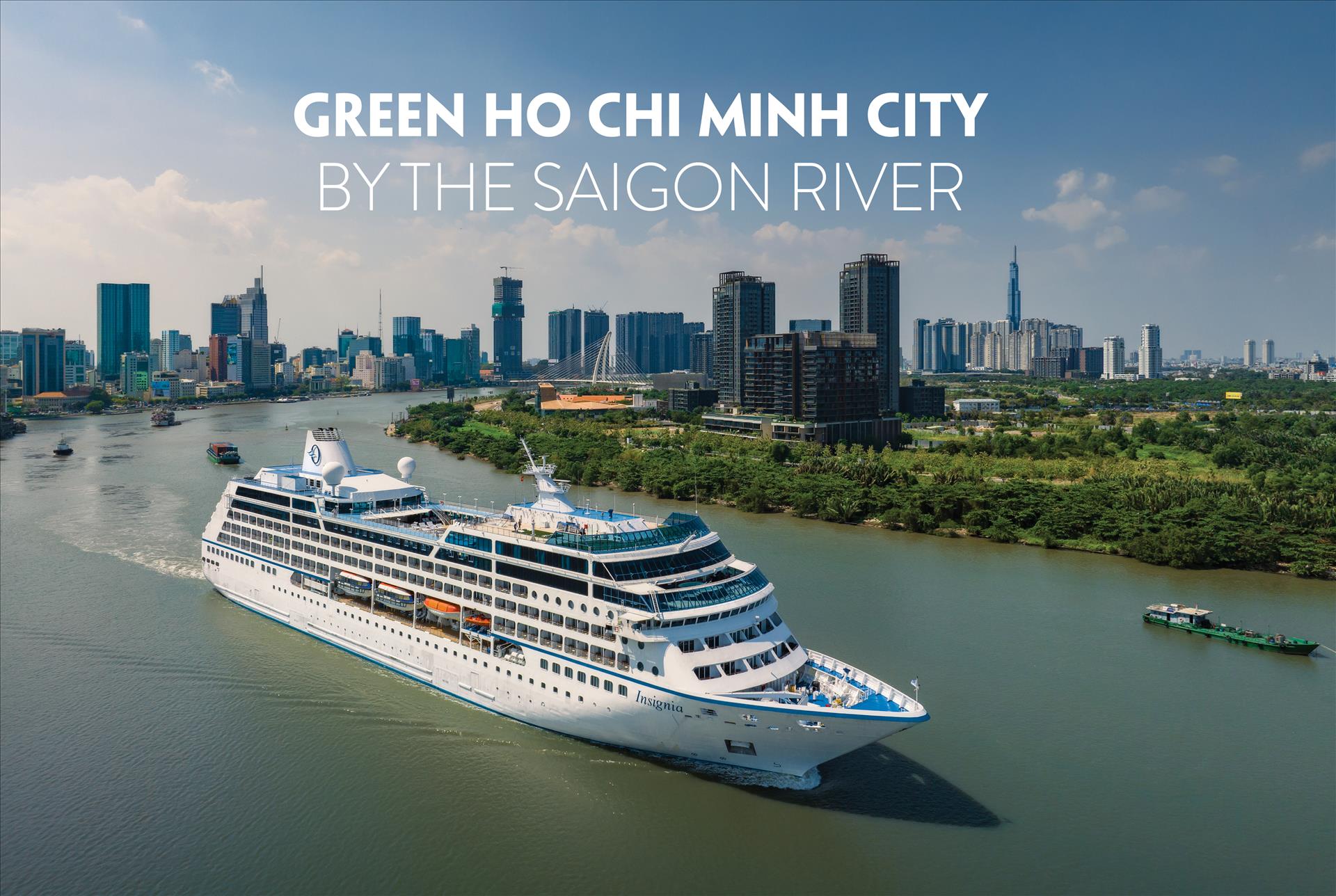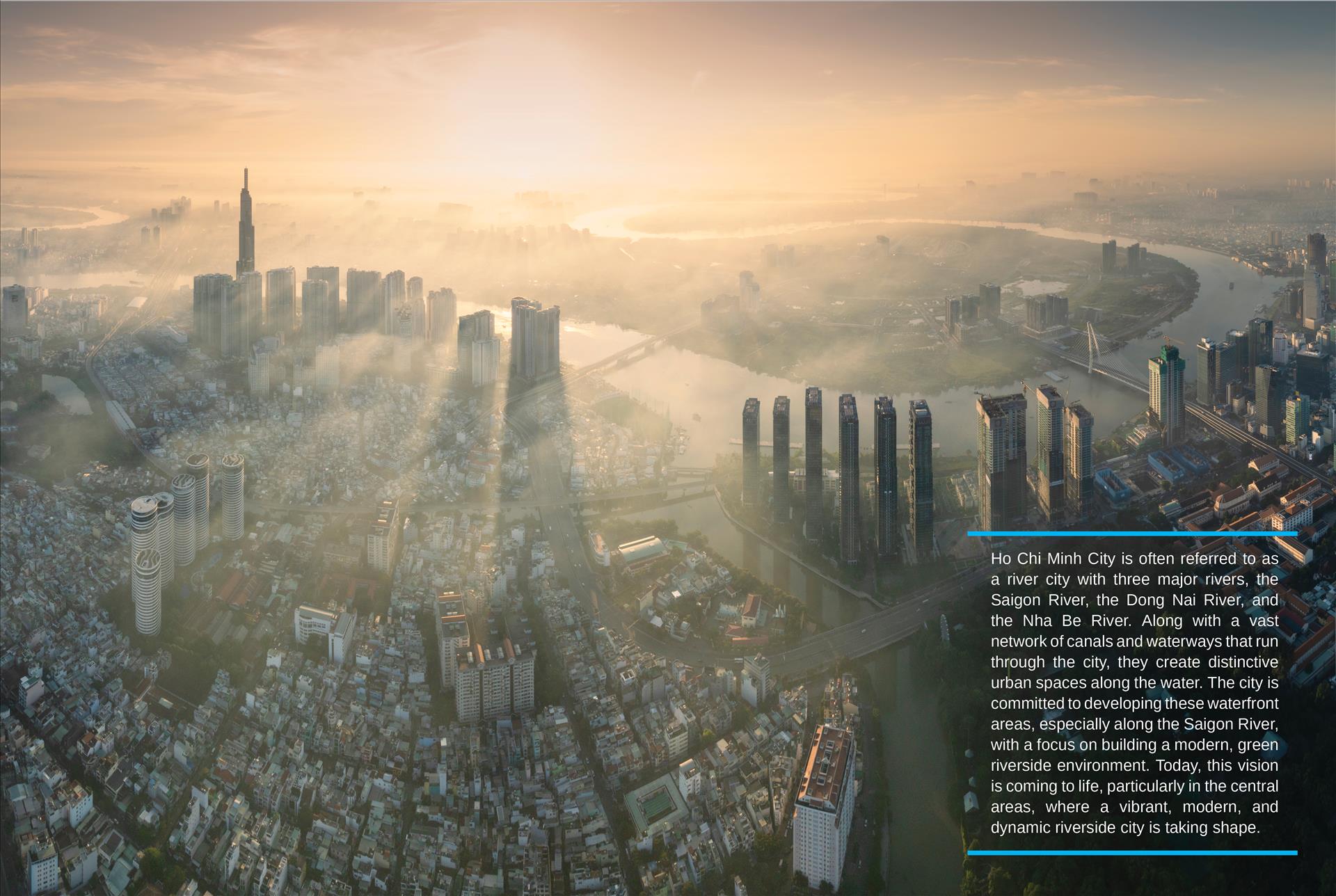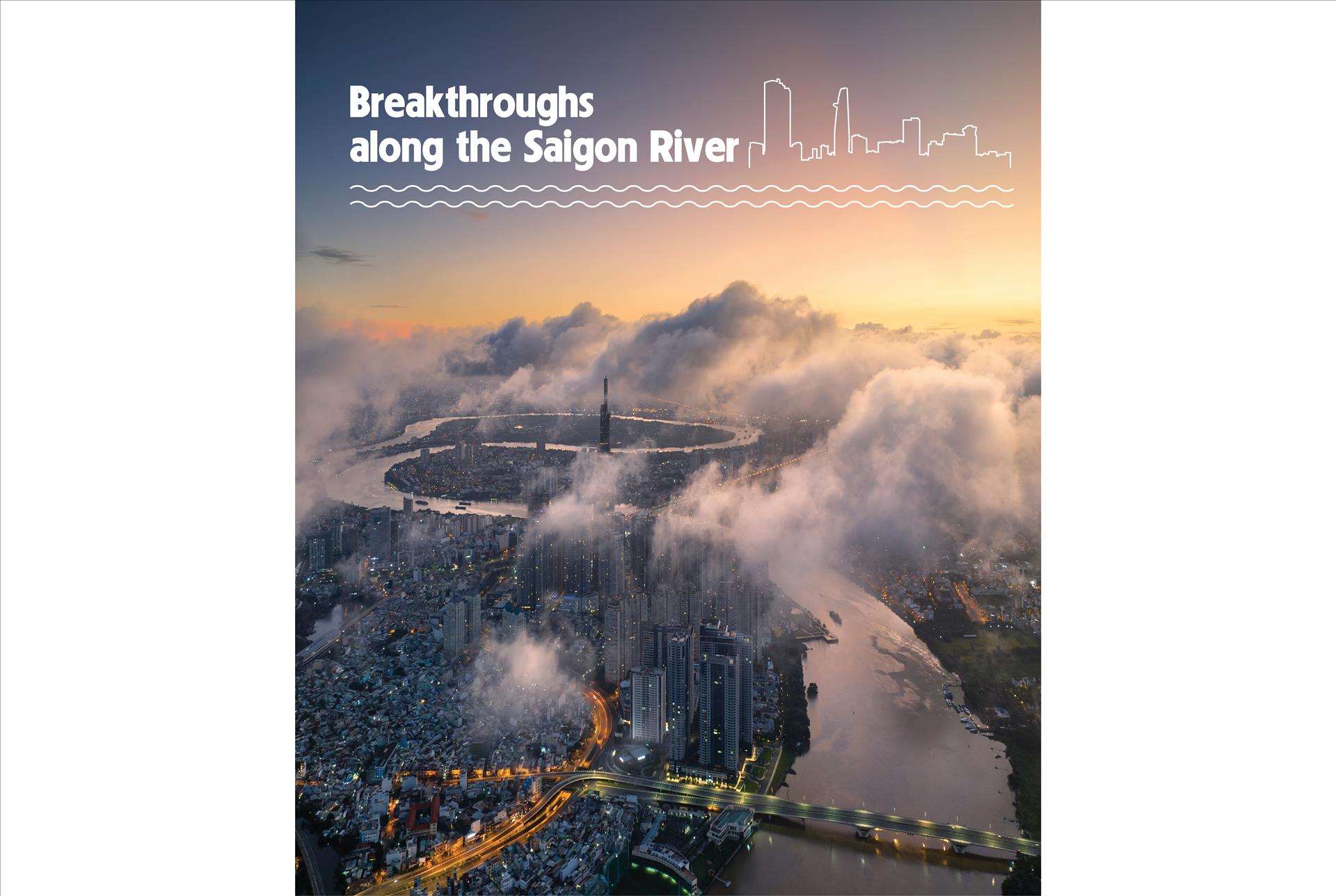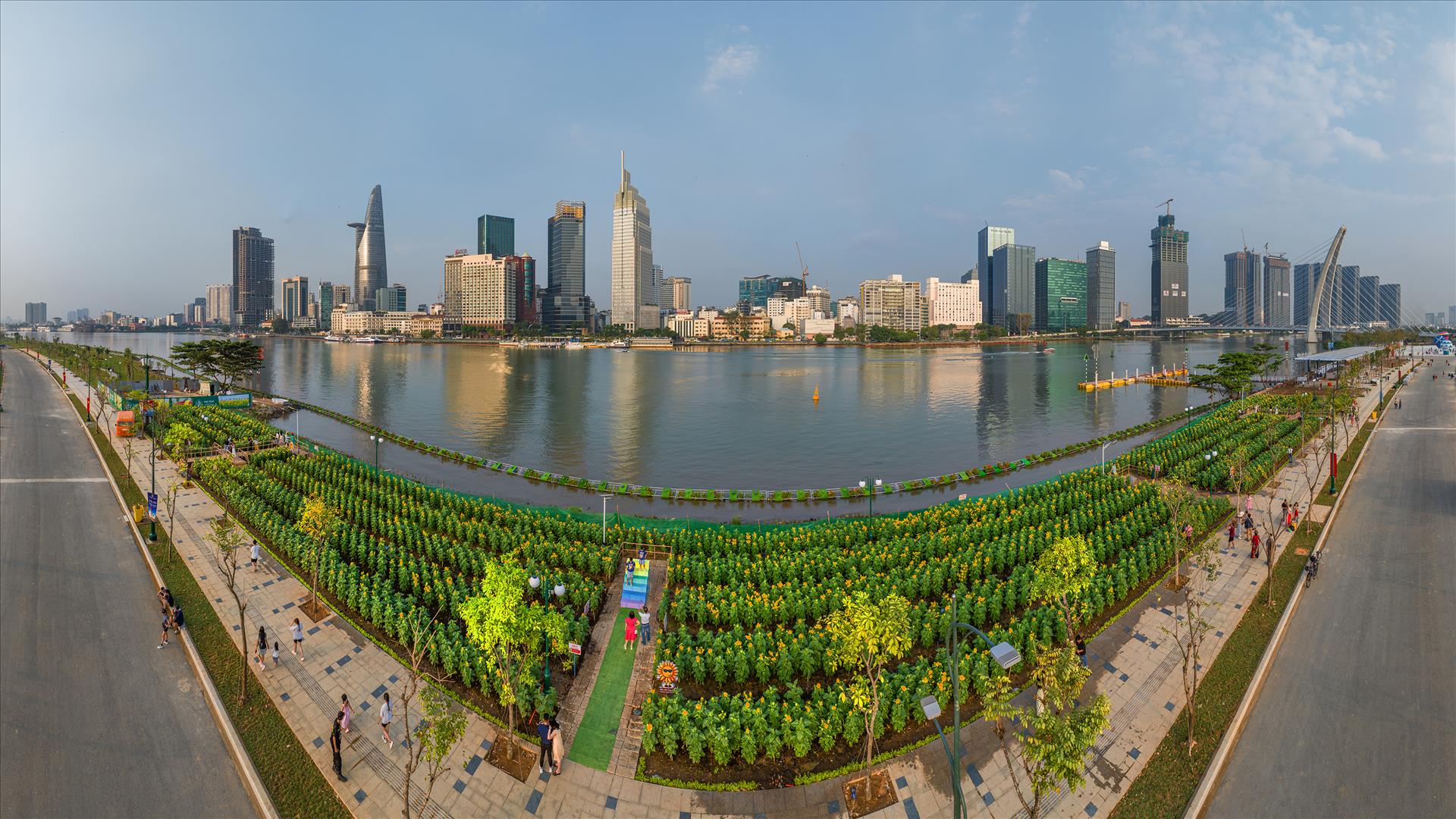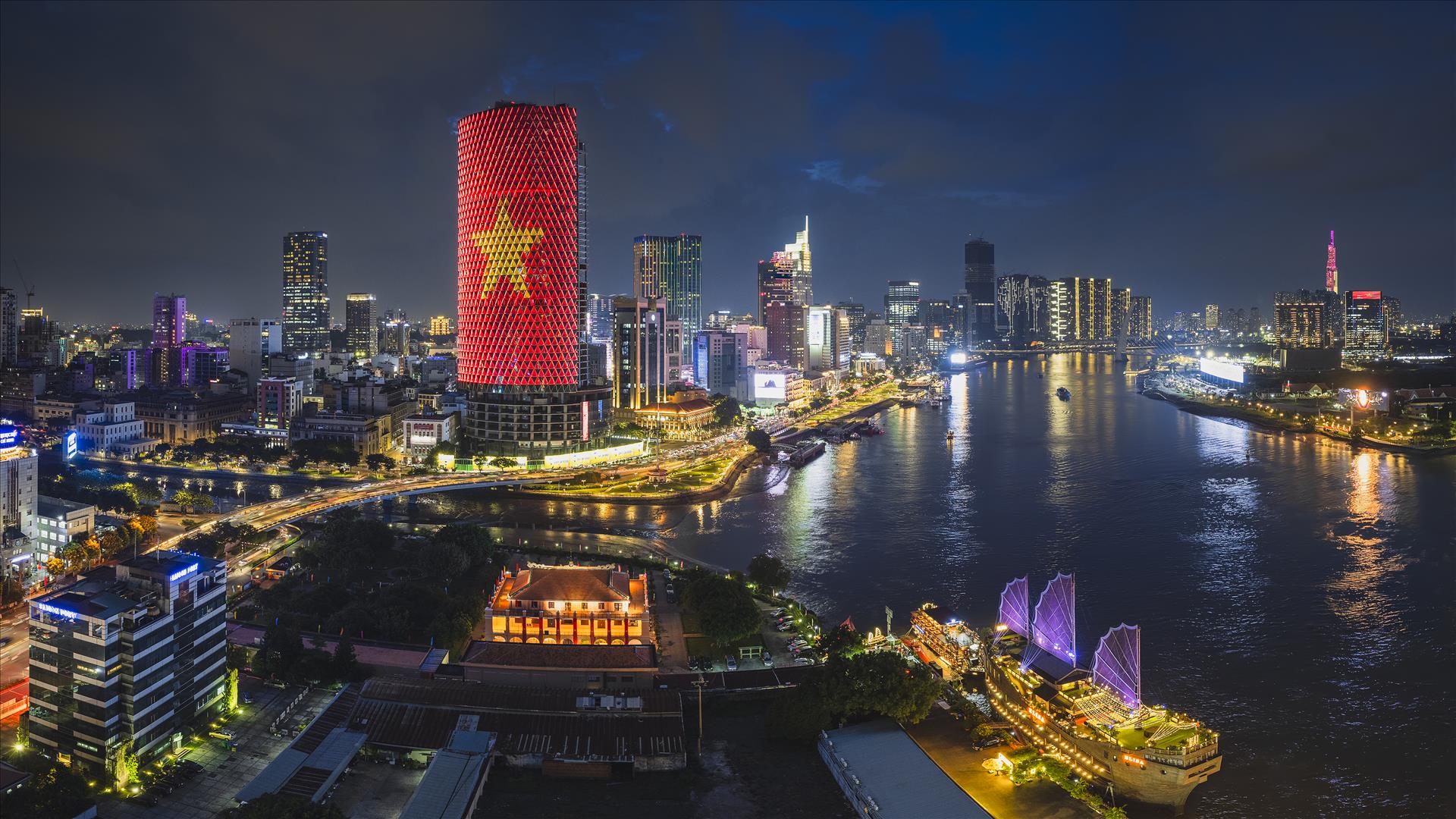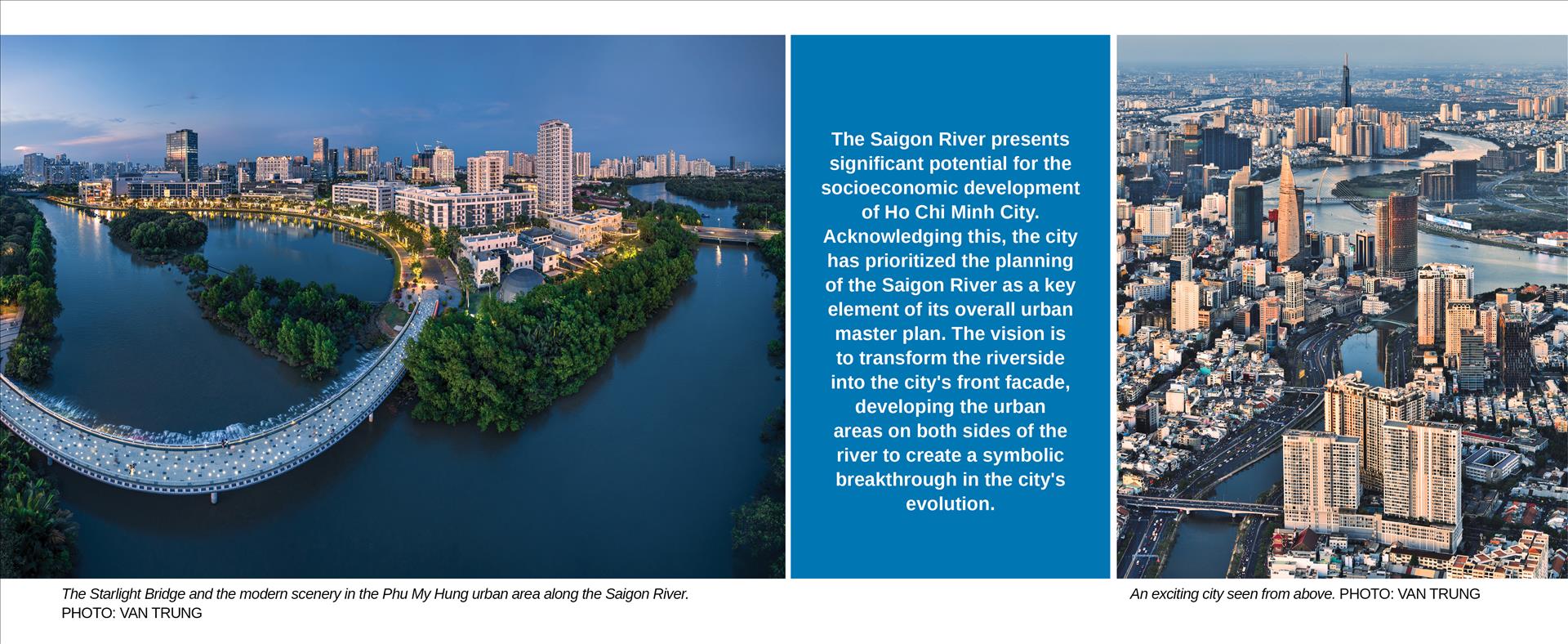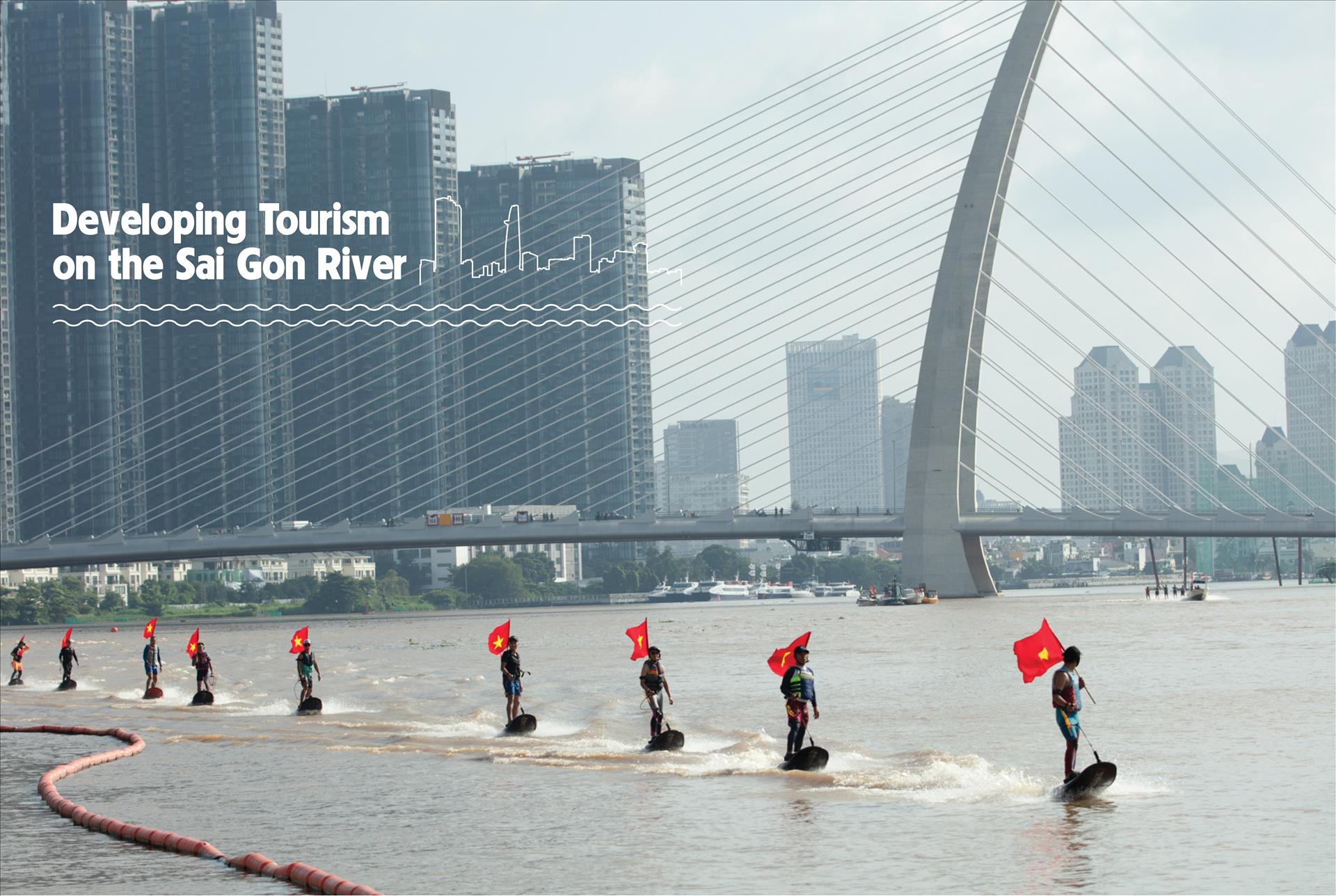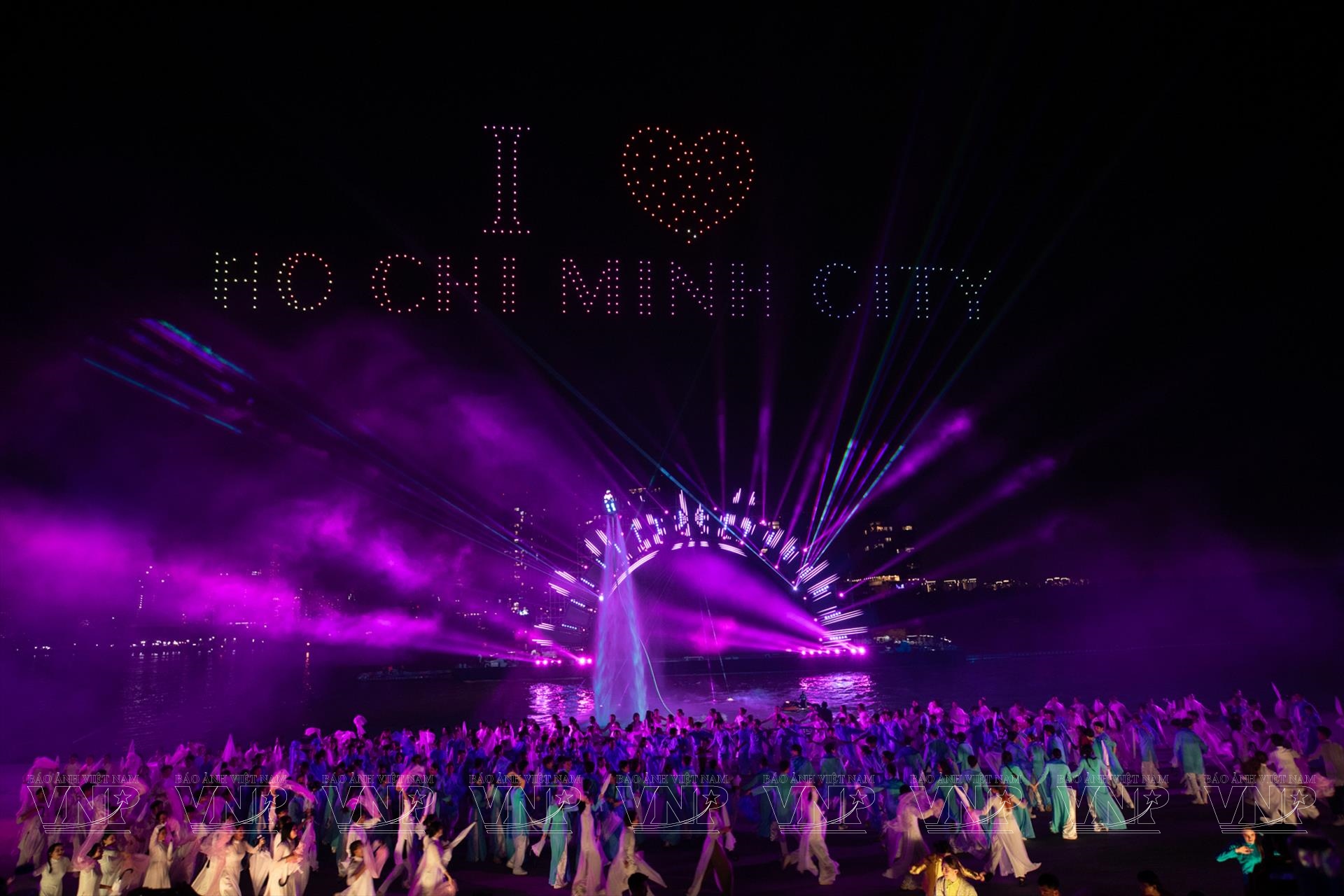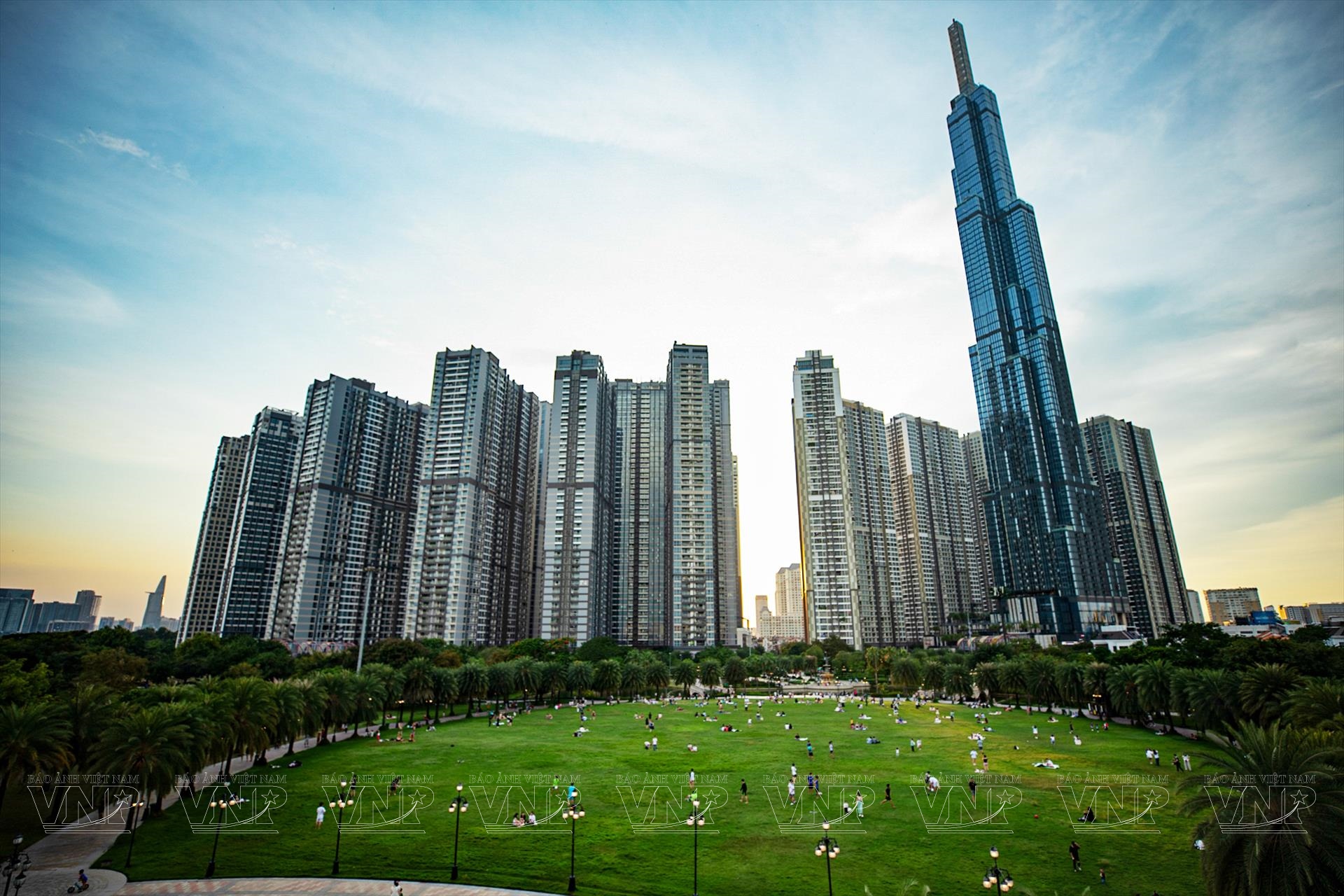Green Ho Chi Minh City by the Saigon River
Throughout its 300 years of formation and development, from the name Saigon, Gia Dinh to Ho Chi Minh City, the region has maintained a deep connection to water, with the Saigon River flowing through its heart. This vital waterway has shaped the city’s history, culture, and economy, featuring prominent locations such as Binh Dong Wharf, Bach Dang Wharf, and Nha Rong Wharf in the city center, alongside a complex network of canals that weave throughout the area.
Since the 2000s, Ho Chi Minh City has prioritized enhancing its riverside landscape and urban areas. As part of this initiative, the city has implemented programs to renovate rivers and canals, organized international competitions to seek urban planning ideas, and invited both domestic and foreign experts to conduct various scientific studies on the city's architectural and urban planning.
The city began expanding its development across the river toward Thu Duc, relocating outdated ports from the city center and establishing Thu Duc (part of Ho Chi Minh City) in 2021. Prior to this, in 2012, the city initiated the "great canal revolution," a transformative project aimed at cleaning, beautifying, and modernizing the 9km Nhieu Loc - Thi Nghe Canal. The locality also has conducted various activities to upgrade the Saigon River, including constructing embankments, upgrading riverside roads, building modern bridges across the river, developing water buses, planning the architecture of buildings along the riverbanks, and creating parks, green landscapes, and public recreational and cultural areas.
Today, many areas along the Saigon River, such as Bach Dang Park (District 1), Nha Rong Wharf (District 4) and Vinhomes Central Park (Binh Thanh District), have essentially transformed into vibrant, modern riverside urban areas that harmoniously blend with the peaceful and refreshing riverside environment.
At a seminar on developing the space and functions along the Saigon River corridor in March 2024, which drew on French experience from the Seine River, Phan Van Mai, Chairman of the Ho Chi Minh City People's Committee, highlighted the city's urgent focus on three key plans for its future development. These plans include the Ho Chi Minh City master plan for the period 2021-2030, with a vision extending to 2050; a review and adjustment of the general plan for the city until 2040, with a vision for 2060; and the development of a general plan for Thu Duc. Within this framework, the city has identified the Saigon River as central to the new master plan and a highlight of this revision.
According to the Ho Chi Minh City Department of Planning and Architecture, the proposal for the planning and management of the Saigon River corridor has been largely completed. The Saigon River plan aims to strengthen community connections, link the region, and reach out to the world, with the goal of transforming the riverside of the Saigon River into a cultural destination in Asia by 2030, targeting an annual growth rate of 8% to 8.5%. This proposal also emphasizes leveraging the rich cultural and historical values of the riverine area to guide the city’s future development.
Ho Chi Minh City stands out as a major tourist hub in Vietnam. Over the past two years, the Ho Chi Minh City Water Festival, held annually in mid-year, has become a prominent local event that offers a captivating experience of water tourism along the Saigon River. The festival features a wide array of exciting activities, including cultural celebrations, sports, and various tourism experiences, drawing in both locals and visitors alike.
In 2023, the festival embraced the theme "The River Tells a Story," and for 2024, it has adopted the theme "The Legendary Voyage". Taking place along the Saigon River, particularly at Nha Rong Wharf in District 4, the festival offers both residents and visitors unique and memorable experiences. It highlights the rich history of Saigon – Cho Lon - Gia Dinh - Ho Chi Minh City, celebrating 300 years of its formation and development.
This rich historical narrative is brought to life through a blend of artistic expressions, ranging from traditional to contemporary forms. Visitors can enjoy performances in music, film, ballet, etc, that enhance the festival atmosphere.
Various well-known tourist spots along the Saigon River, such as the Nha Rong - Khanh Hoi area (District 4), Bach Dang Park, the Ba Son Bridge area (District 1), and the Nhieu Loc - Thi Nghe Canal (District 3) host a range of entertainment, sports, and recreational activities throughout the week, offering both locals and visitors a vibrant experience.
The water festival not only showcases the inherent potential of the Saigon River but also enhances its economic, cultural, and tourism value through a diverse array of activities, including tourism, cultural celebrations, entertainment, arts, sports, culinary experiences, and shopping. This event aspires to become a signature festival that further solidifies Ho Chi Minh City’s identity as a riverside metropolis steeped in cultural heritage.
In recent years, several water-based tourism services have been introduced by the city with great success and growing popularity. These include river bus tours, cruises along the Saigon River, cultural and tourism events that combine onshore and boat activities (particularly in Districts 1, 4, and 8 during the Lunar New Year), tours exploring the Saigon River and Nhieu Loc - Thi Nghe Canal, as well as riverside coffee experiences.
According to architect Ngo Viet Nam Son from the Ho Chi Minh City Architects Association, the city has significant potential to renovate and develop a cohesive riverside space within its urban core, particularly along both banks of the Saigon River, extending from Thanh Da Peninsula in Binh Thạnh District to Tan Thuan Peninsula in District 7. The Thanh Da - Binh Quoi area could be revitalized with an ecological urban identity that emphasizes educational tourism and riverside art villages. Meanwhile, the Truong Tho and Thao Dien areas in Thu Duc could be transformed into modern, creative, and internationally integrated urban spaces, establishing them as the riverside center of Thu Duc.
The development of tourism, culture, sports, and artistic activities, closely linked to the riverside urban expansion, will foster a harmonious, vibrant, and sustainable riverside lifestyle in Ho Chi Minh City. This initiative aims to enhance the city's livability, making it a more desirable place to live.
Story: Son Nghia Photos: Nguyen Thang, Nguyen Luan/VNP & Van Trung
Translated by Nguyen Tuoi Designed by Trang Nhung
